(Brantôme 1885 - 1958)
The Château des Bernardières, at Champeaux
Aquarelle, H. 15 cm; W. 21.5 cm
Signed lower right
Provenance: Private collection, Périgord
Robert Dessales-Quentin was born in one of the most beautiful villages in France: Brantôme, nicknamed the Venice of Périgord, since it is located on the banks of the Dronne, river which became natural defense by encircling the borough. This small town in the north of Périgord was the playground throughout the artist's life. At four years old, he completely lost his hearing as a result of treatment which was unsuitable for his intolerance to quinine, then unknown. His father, a notary in Brantôme, decides to send him quickly to Paris where he will follow his studies at the National Institute for the Deaf. Aware of his artistic tastes, his parents enrolled him at the Jullian Academy, in the studio of the famous Jean-Paul Laurens. Man of taste and terribly attached to his terroir. Dessales-Quentin will easily turn to landscapes rather than to the history painting to which his studies predestined him. It is in Périgord that he will quickly return and find his way in the representation of local heritage. Castles, beautiful residences, churches or views of cities will be presented from 1909 at the Salon of French Artists in Paris. It is with watercolors that he will be most at ease, even obtaining in 1928 a Great Honorable Mention at the Salon, a rare occurrence for this medium. In oil it will have several different periods and styles, in particular a period which one could call "wisteria", due to the recurrent presence of this plant between the two wars in his paintings. Professor of drawing for more than fifteen years within the great Saint-Joseph Institution of Périgueux, and in his workshop on rue du Plantier, he was named by his students the "brilliant left-hander". It is in this workshop that Dessales-Quentin welcomed the "all-Périgord" each year for an exhibition of his highly anticipated works. Used to old Perigord stones, he did not neglect "elsewhere". Corrèze will be a land of recurring passage, but also the Basque Country, French as Spanish. He will exhibit his works in many French cities, traces of which we find very regularly through the well-known labels on the back of the watercolors and their original frame.
Located near one of the four baronies of Périgord, that of Mareuil, the village of Champeaux and Chapelle-Pommier resulting from the merger of two municipalities in the 19th century, shelters a few hundred meters from the village of Champeaux, the fortress of Bernardières. Known since the 12th century, this stronghold was English during the Hundred Years War, but taken over in 1377 by the famous Bertrand du Guesclin. Today still perched on its promontory overlooking the small valley of the Nizonne, the Château des Bernardières, now fully listed as a Historic Monument, is the result of several centuries of successive developments. The 12th century Donjon dominates the rest of the buildings, most of which date from the 16th and 17th centuries. This watercolor is taken from the front door of the fortress named Porte Henri II, and shows the north facade of the castle and its circular tower.


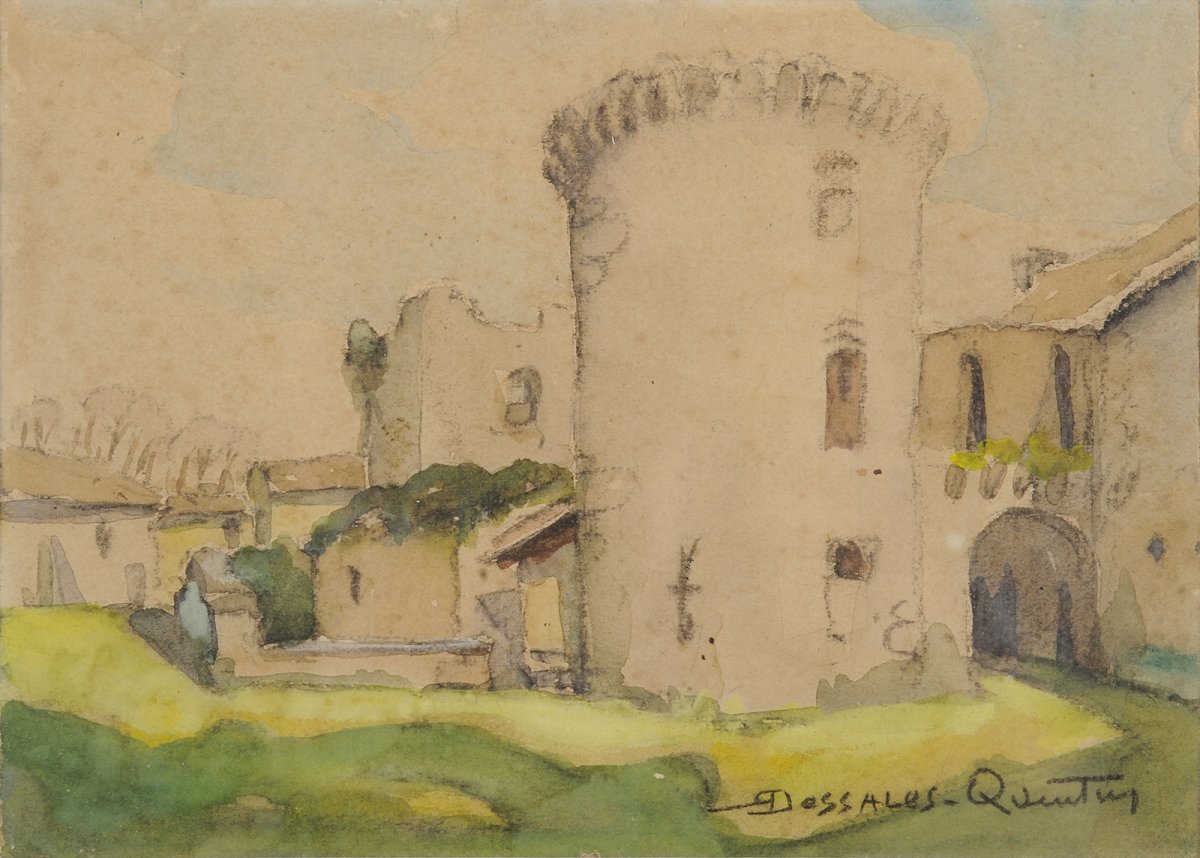
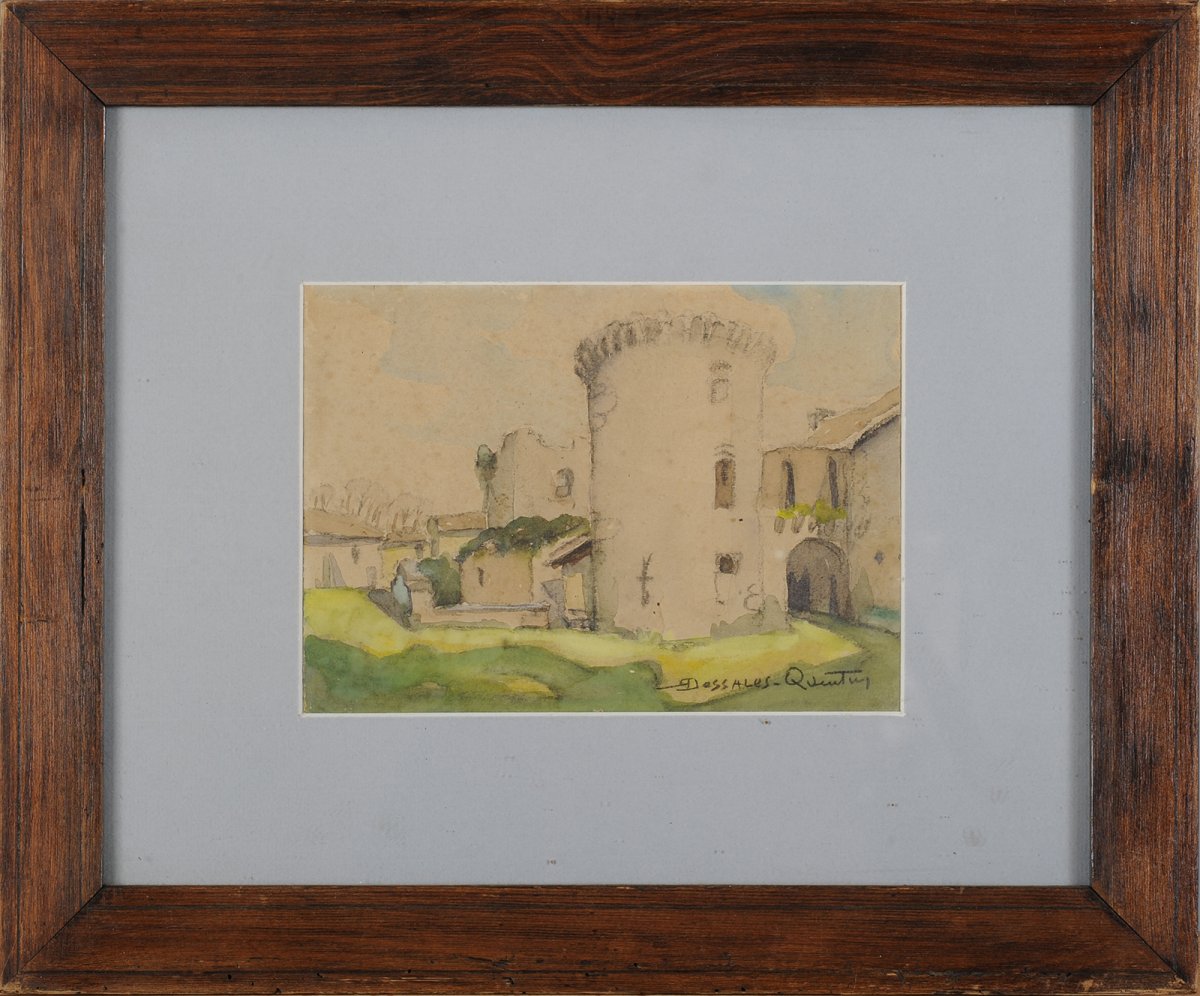



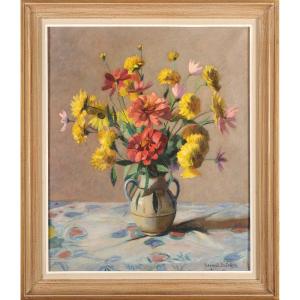
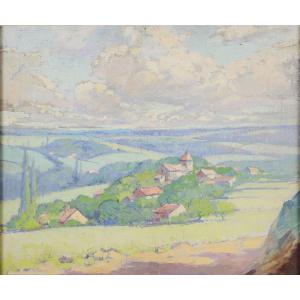

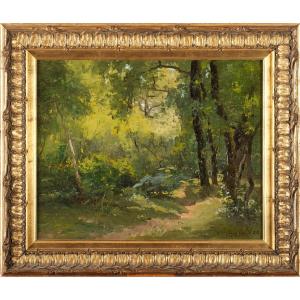



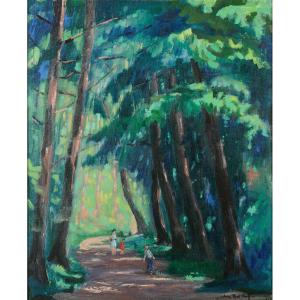
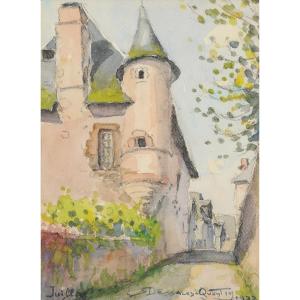

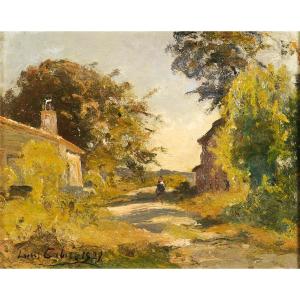



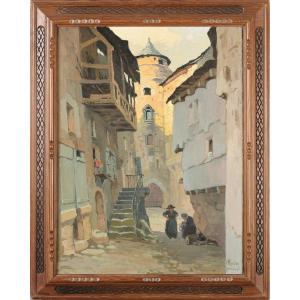
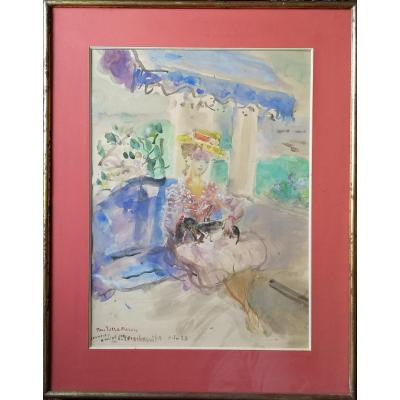
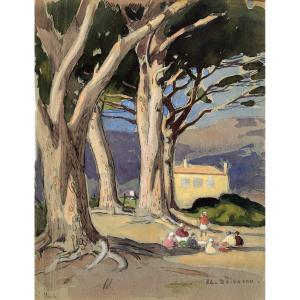






 Le Magazine de PROANTIC
Le Magazine de PROANTIC TRÉSORS Magazine
TRÉSORS Magazine Rivista Artiquariato
Rivista Artiquariato